Tools Required
S8190A
Removal Procedure
- Disconnect the negative battery cable.
- Recover the refrigerant using an approved refrigerant recovery system. Measure the amount of oil lost during recovery and record.
- Remove the nuts from the combination valve studs.
- Remove the air hose.
- Remove the vacuum source hose. There is no need to disconnect the internal vacuum hose for this procedure.
- Remove the combination valve and gasket from the rear air compressor bracket.
- Position the combination valve and gasket away from the A/C compressor bracket.
- Remove the air pipe nuts from the exhaust manifold studs.
- Remove the air pipe.
- Remove the accessory drive belt from the compressor clutch pulley by rotating the belt tensioner clockwise using a 14 mm (9/16 in) wrench. Snap-On™ tool S8190A or equivalent can be used.
- Disconnect the compressor clutch electrical connector.
- Disconnect the suction and the discharge hoses at the compressor.
- Install plastic bags on the open end of the low and high side hoses.
- Remove the rear compressor to bracket bolts.
- Remove the front compressor to bracket bolts.
- Remove the compressor.
Caution: Refer to Battery Disconnect Caution in the Preface section.
Notice: When servicing the compressor, keep dirt and foreign material from getting on or into the compressor parts and system. Clean tools and clean work area are important for proper service. The compressor connections and the outside of the compressor should be cleaned before any ON CAR repairs, or before removal of the compressor. The parts must be kept clean at all times and any parts to be assembled should be cleaned with a non-petroleum based solvent and dried with air. Use only lint free cloths to wipe parts. Do not allow solvent to enter compressor or hoses.
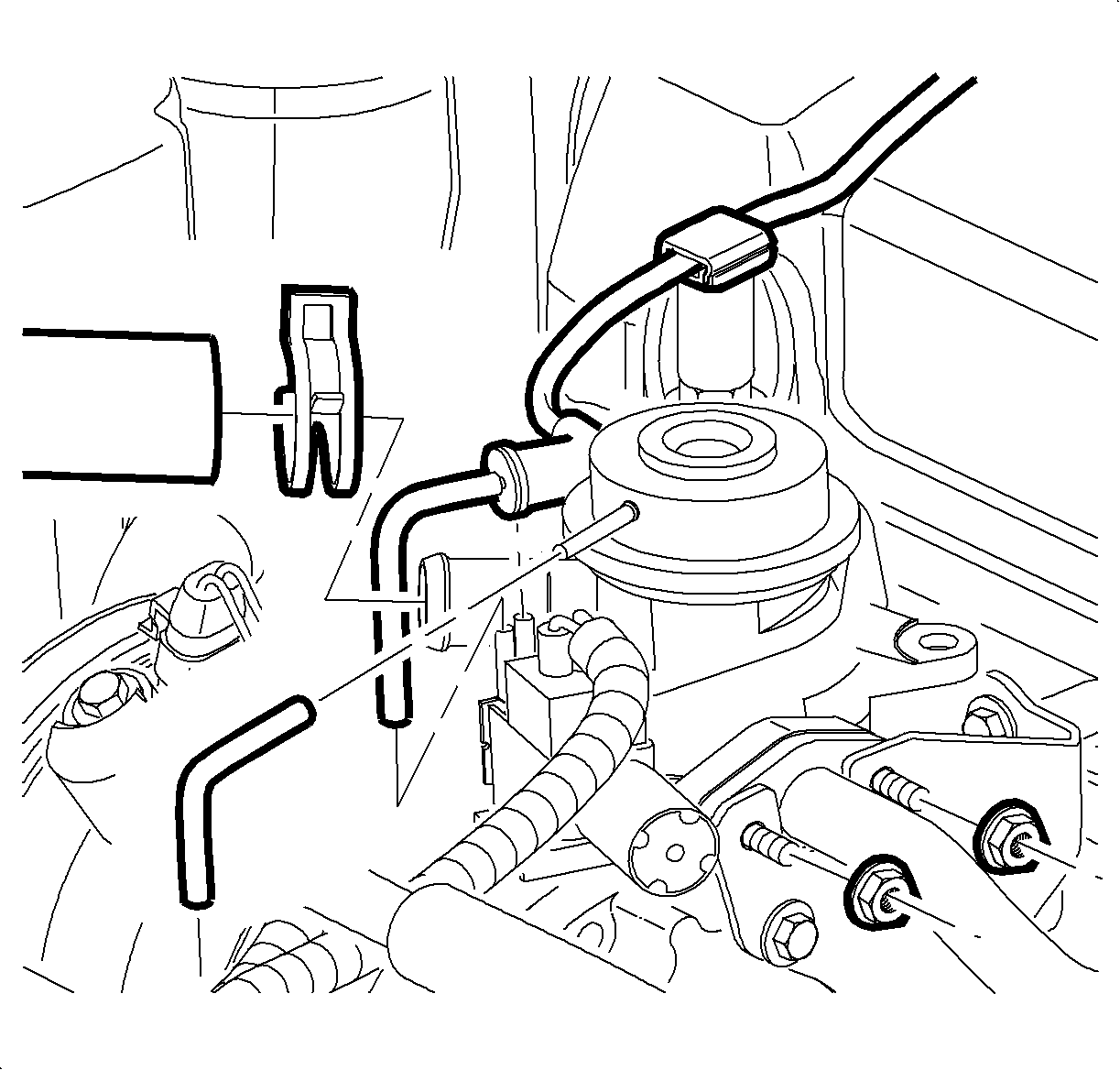
Important: Verifying the purity of the refrigerant with a refrigerant purity identifier before recovery is recommended.
Important: Steps 3 through 9 are only necessary if the vehicle is equipped with a secondary air pump reaction system (AIR).
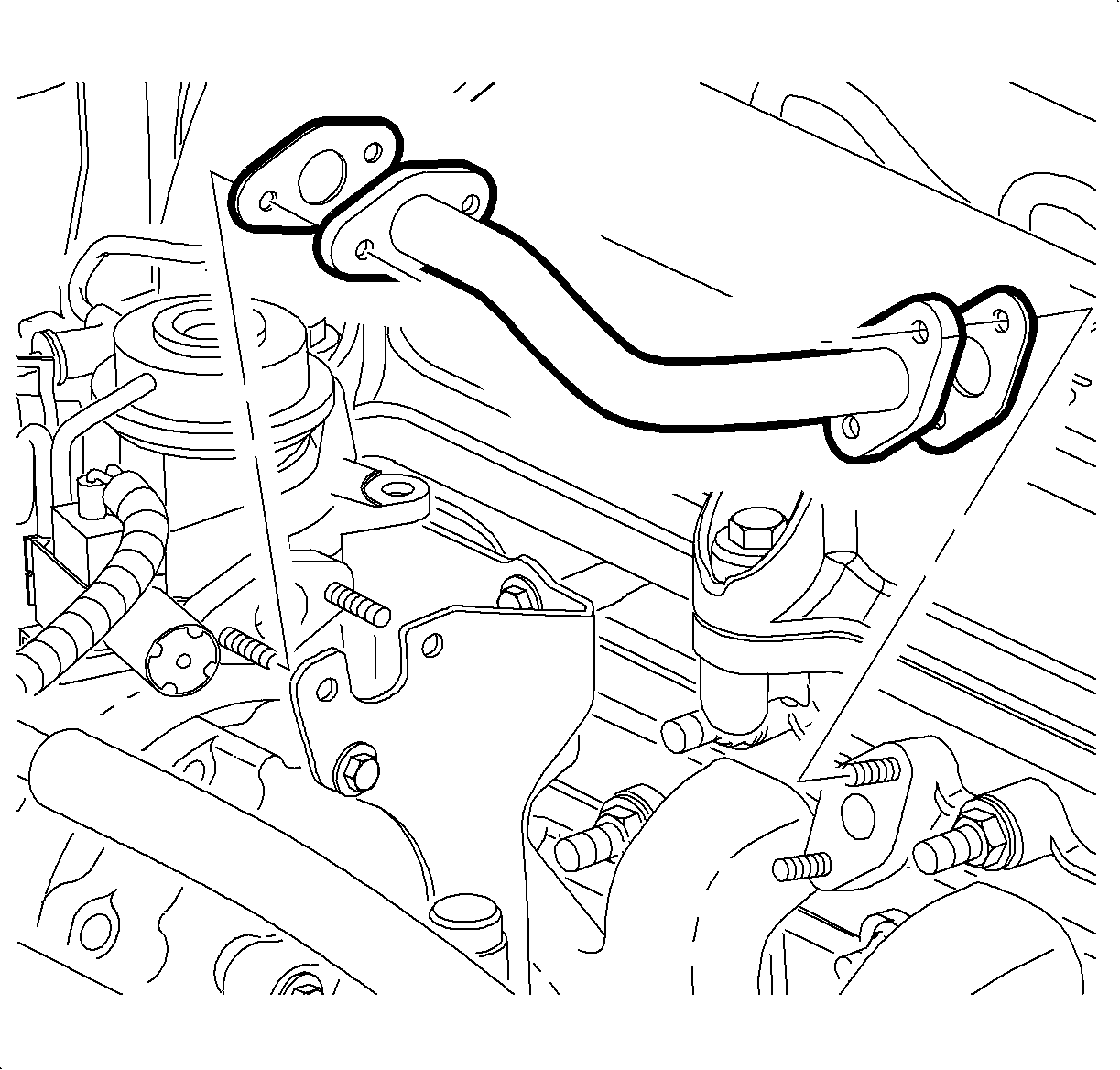
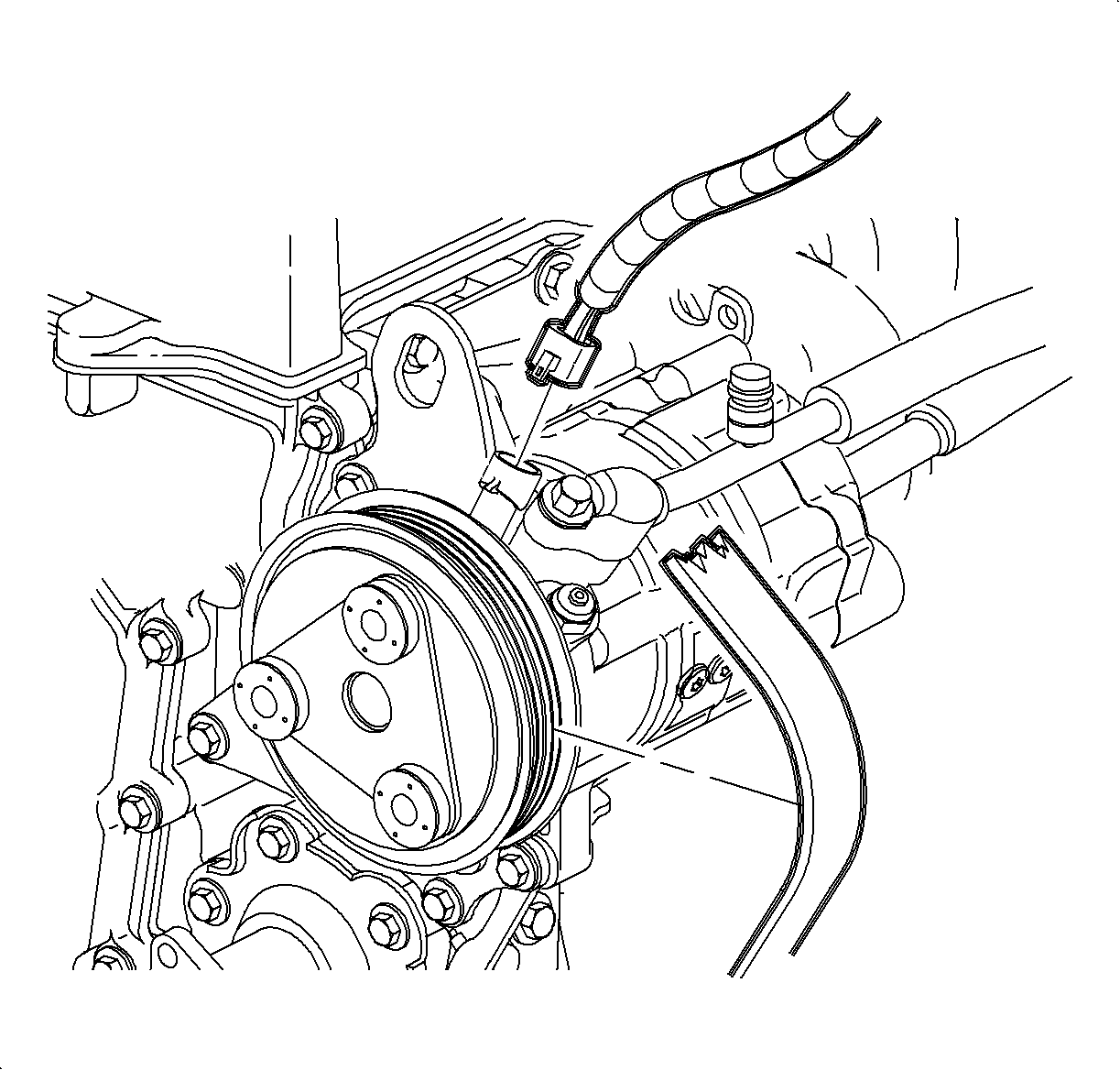
Caution: Do not remove hoses or lines before system is fully discharged. System may be under pressure and contact with R134a may cause personal injury.
Important: Keep the compressor level during removal to avoid any oil loss from the low or high side ports.
Oil Measurement
- Remove the A/C compressor from the vehicle. Refer to Air Conditioning Compressor Replacement .
- Drain the oil into a clean container.
- Measure and record the oil removed from the A/C compressor.
- Discard the removed oil, as all new replacement (service) A/C compressors come installed with 65cc of Saturn PAG compressor oil.
- Place the new A/C compressor on a clean work bench with the high and low side ports in an upright position.
- With the A/C compressor high and low side ports in an upright position, slowly remove the high side cap retaining bolt to release the nitrogen (N2) charge.
- Remove the high and low side caps. Install the high and low side caps on the A/C compressor removed from the vehicle, to prevent any oil from leaking out when the A/C compressor is being shipped.
- Install the oil drain adapters on the high and low side ports of the new A/C compressor.
- Drain the oil from the new A/C compressor into a clean, dry container.
- Measure and record the oil removed from the A/C compressor.
- Add the recorded amount of oil drained from the removed A/C compressor, measurement amount was obtained in previous steps, and the amount of oil lost during the recovery process to the new A/C compressor.
- Install the A/C compressor into the vehicle. Refer to Air Conditioning Compressor Replacement .
Important: PAG oil charge can be identified by locating the label on the rear of the A/C compressor. The 65cc PAG oil charged service replacement A/C compressor will read 65cc COMP/150cc SYS (150cc oil charge in the total system for the model year serviced). Improper quantity of oil charge in the system will degrade the performance.
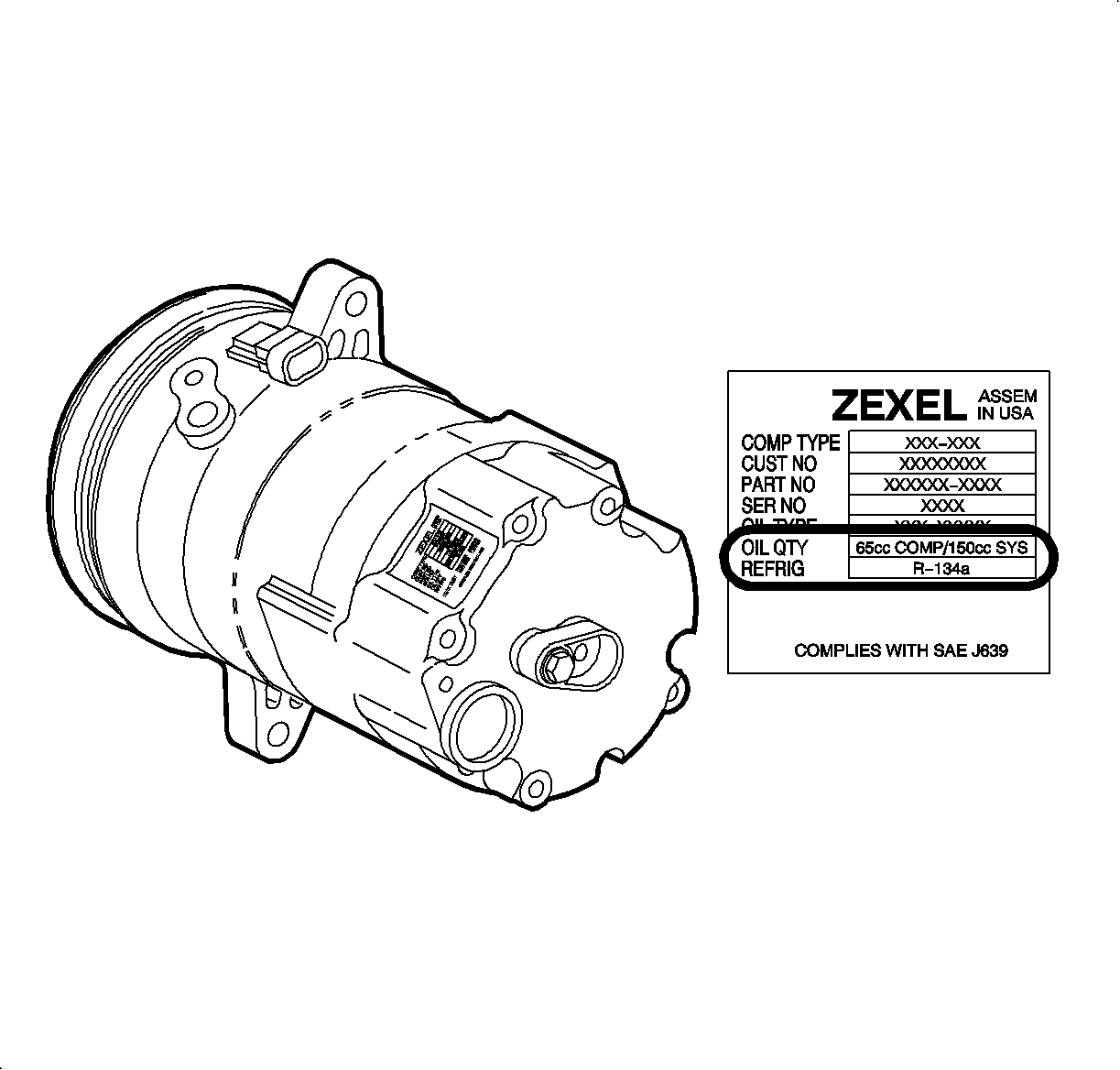
Notice: During oil removal procedure, condition of oil should be evaluated. Compressor
oil never breaks down unless something is wrong with the compressor or A/C system.
If one or more of the following conditions exist, replace compressor and receiver-dehydrator.
• Color of oil is dark brown or black • There is a presence of foreign substances, metal fittings, etc. in oil
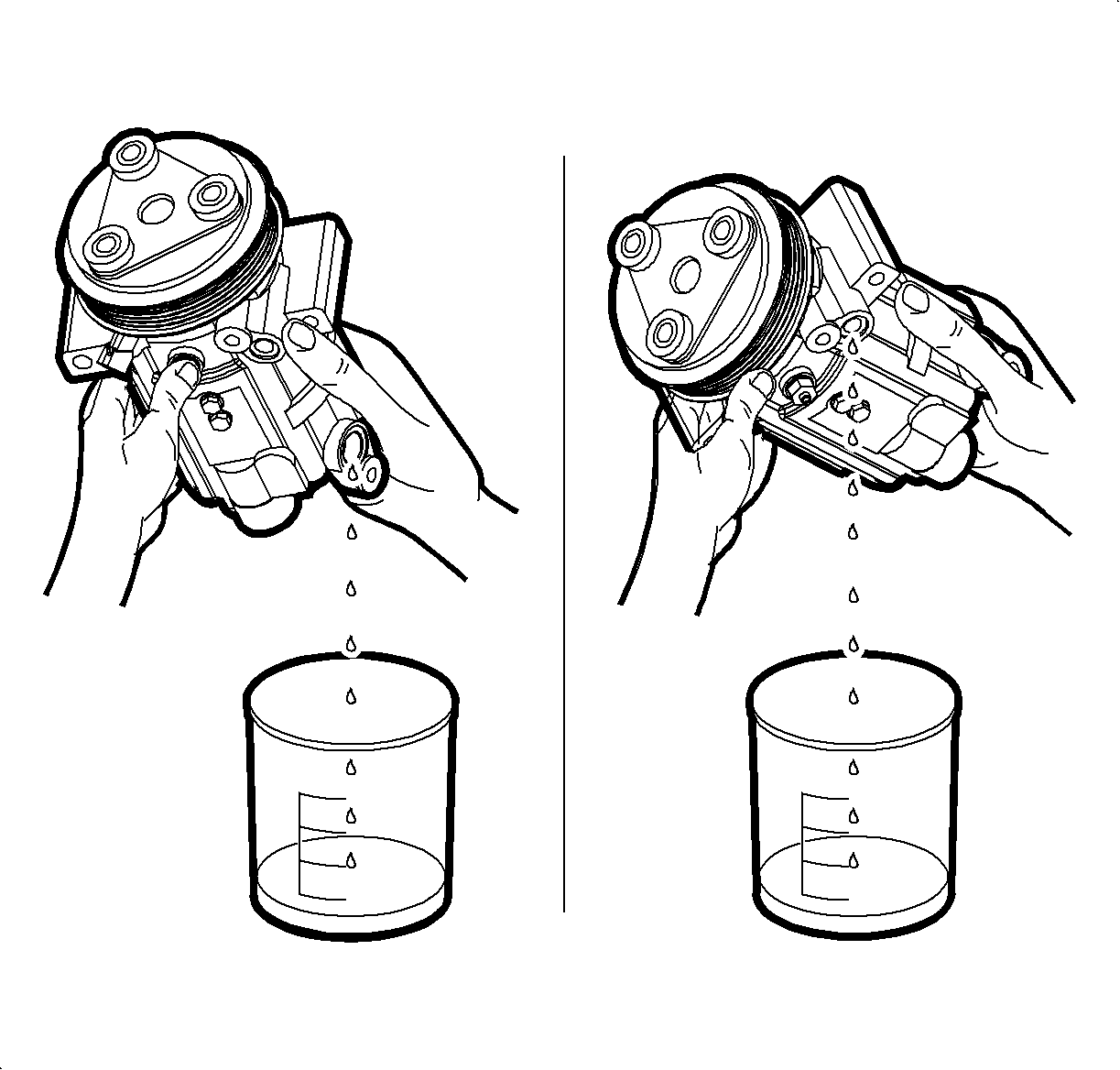
| 2.1. | Position the A/C compressor to the drain from the high side port first. |
| 2.2. | Move the A/C compressor to different positions to remove all the oil possible. |
| 2.3. | Turn the A/C compressor over to drain the oil from the low side port. |
| 2.4. | Rotate the A/C compressor drive plate in both directions to remove the oil from the A/C compressor chambers. |
| 2.5. | Stop the oil draining when the oil coming from the low and high side ports becomes only drops. |

Important: Oil drained from the new A/C compressor can be installed if drained into a clean, dry container.
| 9.1. | Position the A/C compressor to drain from the high side port first. |
| 9.2. | Move the A/C compressor to different positions to remove all the oil possible. |
| 9.3. | Turn the A/C compressor over to drain the oil from the low side port. |
| 9.4. | Rotate the A/C compressor drive plate in both directions to remove the oil from the A/C compressor chambers. |
| 9.5. | Stop the oil draining when the oil coming from the low and high side ports becomes only drops. |
Important: Additional NEW Saturn PAG oil may be needed to obtain the amount of PAG oil required for the next step.
Installation Procedure
- Install the compressor to the front bracket bolts. Finger tighten only.
- Install the compressor to the rear bracket bolts. Tighten the front and rear bolts to specifications.
- Remove the plugs or plastic bags from the suction and discharge hoses.
- Install a new suction hose to the compressor slim line seal washer. Do not lubricate.
- Lubricate the O-ring.
- Install the O-ring for the discharge hose to the compressor.
- Install the hoses to the compressor low and high side ports. Tighten the bolts to the specifications.
- Connect the compressor clutch electrical connector.
- Install the accessory drive belt.
- Install the air pipe onto the exhaust manifold studs.
- Install the air pipe into the rear air compressor bracket slot.
- Install the combination valve studs into the rear air compressor bracket through the air pipe flange holes.
- Install and tighten the nuts on the combination valve studs.
- Install and tighten the nuts on the exhaust manifold studs.
- Install the vacuum source hose.
- Install the air hose.
- Connect the negative battery cable.
- Set the clock to the proper time.
- Evacuate, charge and leak test the A/C system.
- Run the A/C performance test.
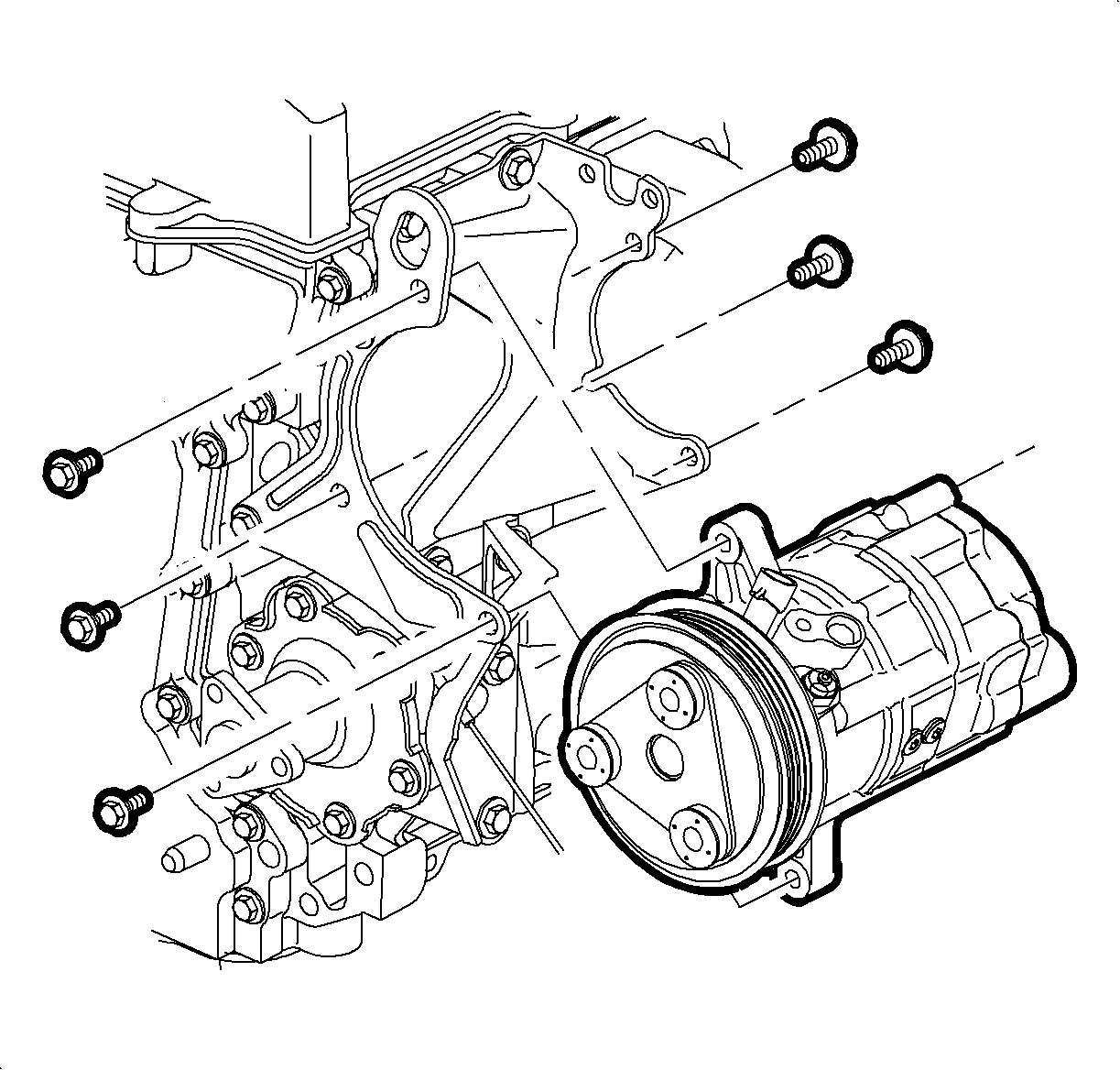
Important: Keep the compressor level during installation to avoid any oil loss from the low or high side ports.
Notice: Refer to Fastener Notice in the Preface section.
Tighten
| • | Tighten the A/C compressor front bolts-to-bracket to 49 N·m (36 lb ft). |
| • | Tighten the A/C compressor rear bolts-to-bracket to 25 N·m (19 lb ft). |
Notice: Use only Polyalkylene Glycol Synthetic Refrigerant Oil (PAG) for internal circulation through the R-134a A/C system and only 525 viscosity mineral oil on fitting threads and O-rings. If lubricants other than those specified are used, compressor failure and/or fitting seizure may result.
Important: Do not lubricate the new slim line seal washer on the compressor side of the suction hose. The slim line seal washer cannot be interchanged with a typical O-ring in the A/C system. Use only suction line slim line O-rings as a replacement.
Tighten
| • | Tighten the suction hose-to-compressor to 25 N·m (19 lb ft). |
| • | Tighten the discharge hose-to-compressor to 25 N·m (19 lb ft). |

Notice: Make sure gaskets are installed correctly or a leak will occur. If gaskets are removed from stubs, replace with new gaskets. Installation steps must be performed in sequence.

Important: Steps 10 through 16 are only necessary if the vehicle is equipped with a secondary air pump reaction system (AIR).
Tighten
Tighten the air system combination valve nuts to 7 N·m (62 lb in).

Tighten
Tighten the air system pipe-to-exhaust manifold studs to 7 N·m
(62 lb in).
Tighten
Tighten the negative battery cable to 17 N·m (13 lb ft).
